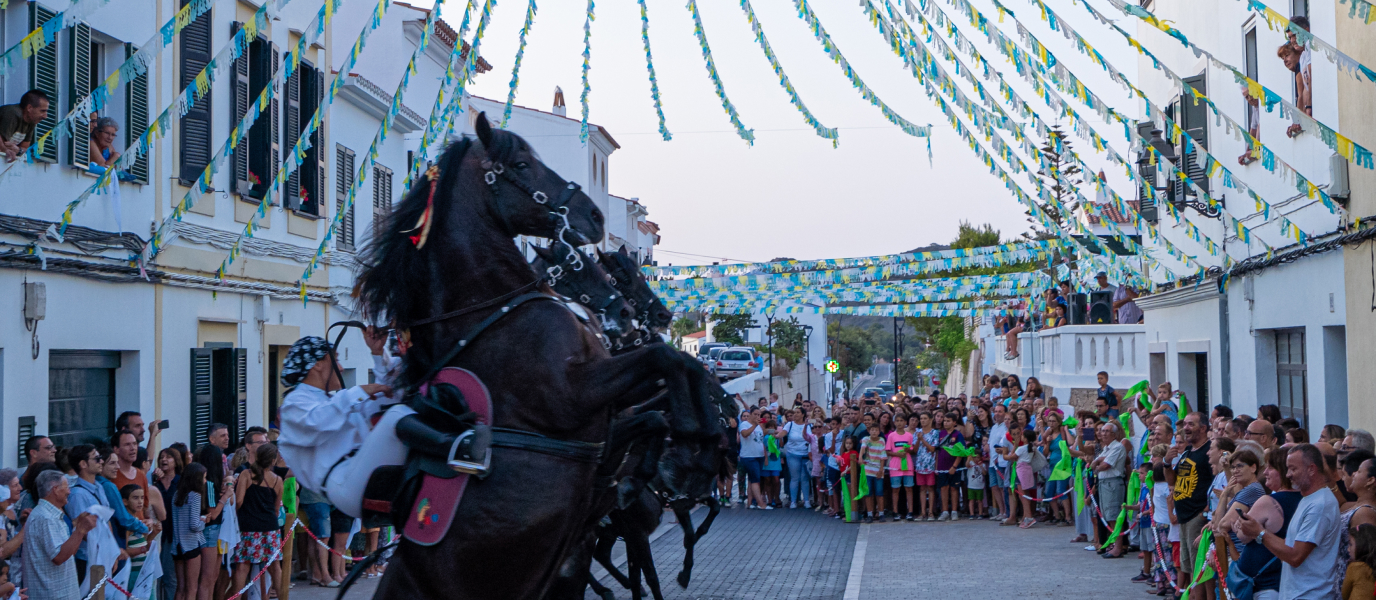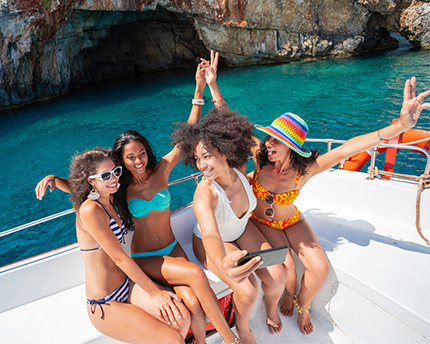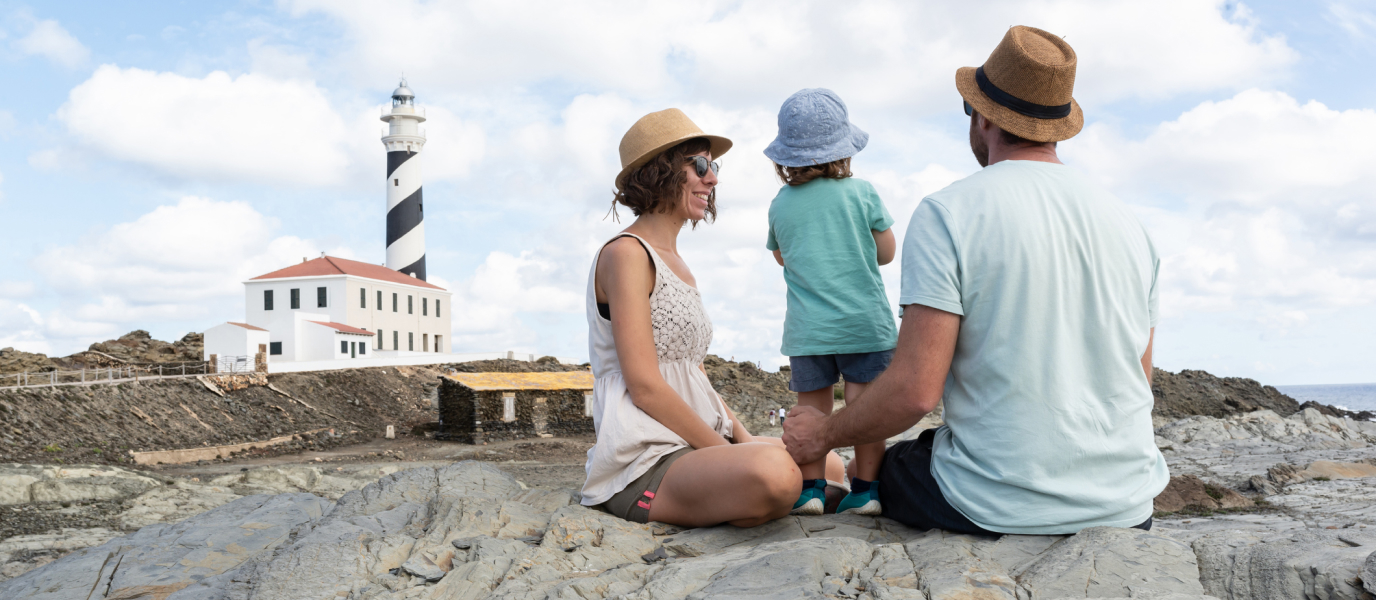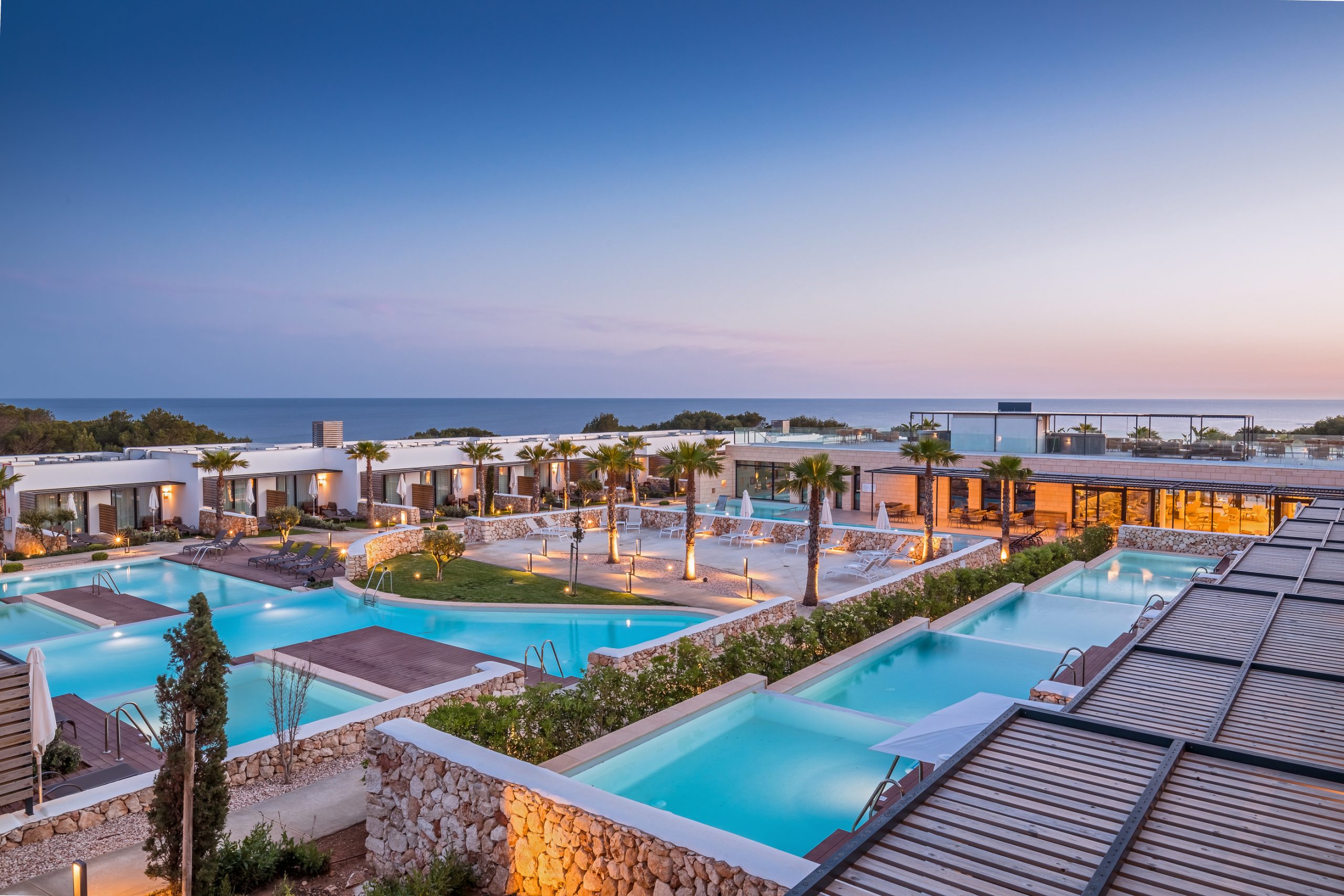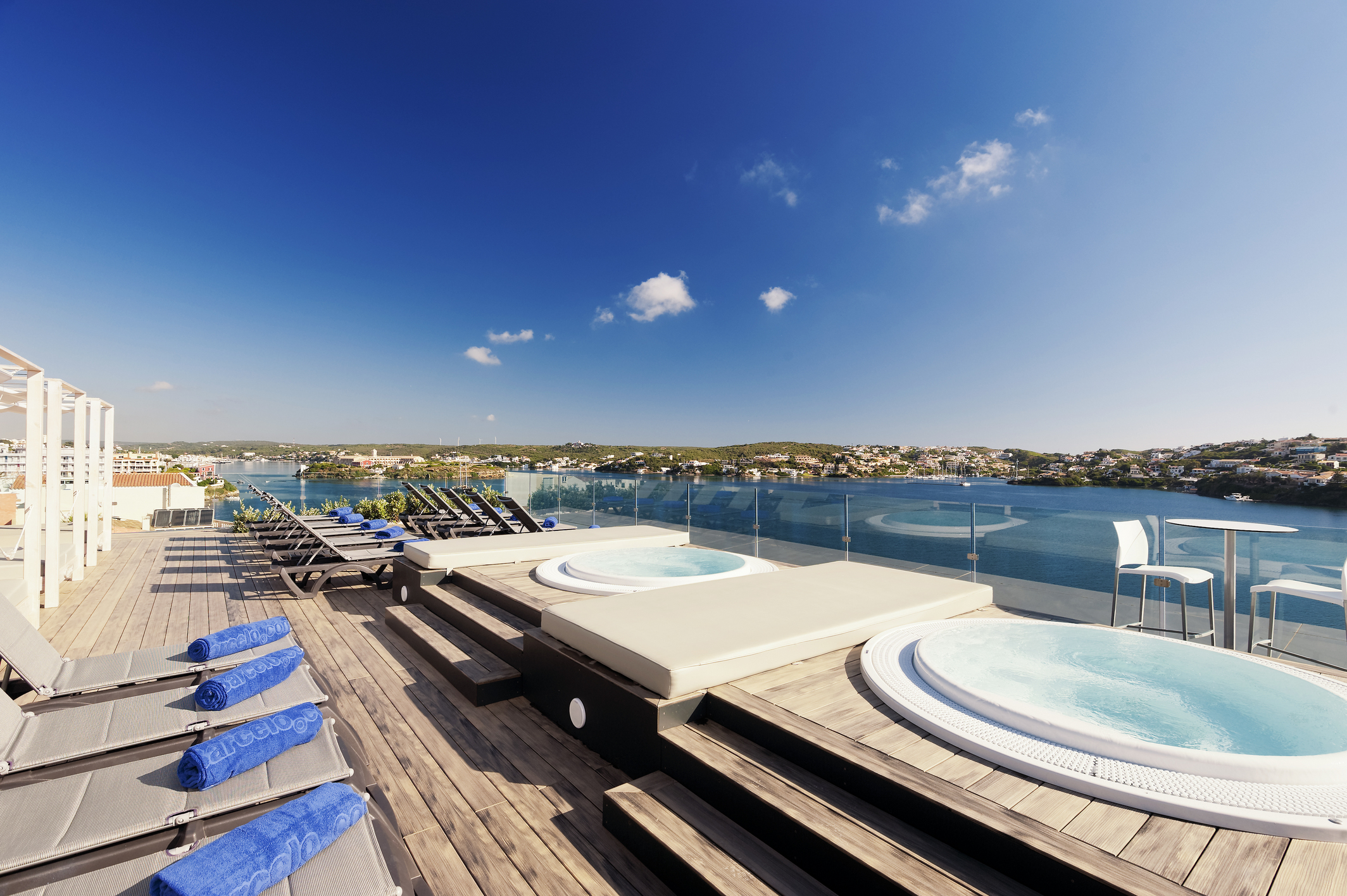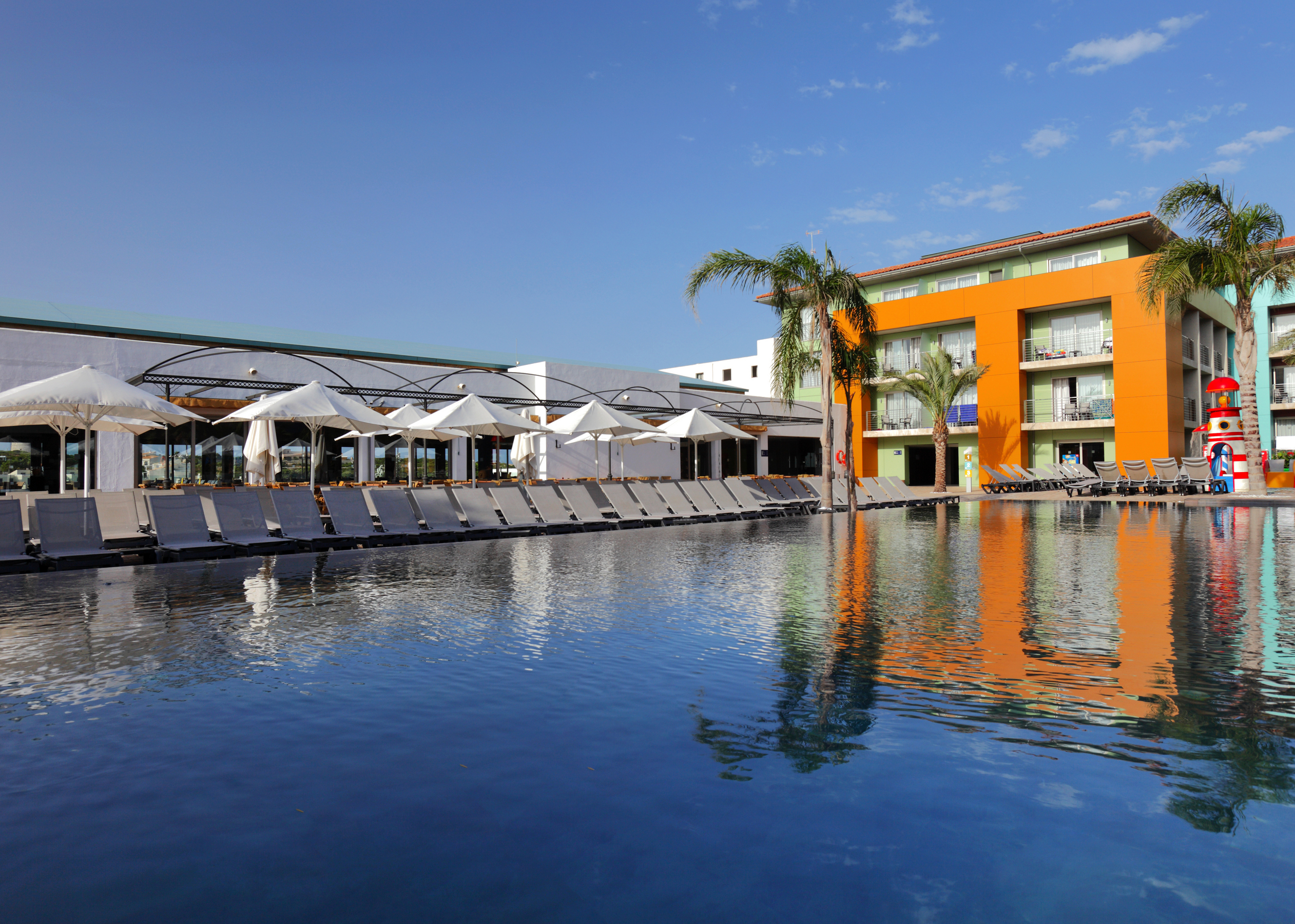Traditional folk festivals present an unrivalled opportunity to gain an insight into the culture of a people, and to discover their roots. Minorca’s festivals are deeply rooted in the psyche of the island’s population, and combine tradition with general revelry. If you visit Minorca during the summer months, you may find yourself swept up in the festivals held in Ciutadella, Es Mercadal, Fornells, or Mahón, and you will be amazed at a unique spectacle with one single undisputed star: The pure-bred Minorcan horse
The pure-bred Minorcan horse
You will recognise a pure-bred Minorcan horse by its jet-black coat, its slender limbs, its feistiness, noble nature and agreeable disposition.
The Asociación de Criadores y Propietarios de Caballos de Raza Menorquina [Pure-bred Minorcan Horse Breeders’ and Owners’ Association] is entrusted with maintaining the ‘Official breed registry of the pure-bred Minorcan horse’. This is a register for animals of this specific breed, and includes details of their ancestry and other important information which will help to preserve this breed, whose origins date back centuries.
For riders, this is a splendid saddle-horse, which readily adapts to all types of dressage and training. Above all, however, this is a horse perfectly at home among large crowds—as is the case during the jaleos [horse-riding displays] of Minorca’s festivals.
What are Minorca’s jaleos?
The jaleos are a tradition dating back to the fourteenth century. During these events, the caixers [riders] parade—smartly dressed in black and white and on bedecked horses—to the main squares of the island’s towns and villages. There, the horses put on a show of dancing, prancing and jumping among the crowds which, in a lively, festive mood, cheer on the caixers to the tune of traditional folk songs.
If you visit the island of Minorca between June and September, be warned that each jaleo can last up to six hours. So it is likely that you will come across a jaleo if you stop off to look around a town or village, and if that is the case, make sure you don’t miss the experience—though it may be advisable to watch from a distance of several metres.
The festivals begin: Sant Joan de Ciutadella
St John’s Eve is a magical date in many parts of the world. In Minorca, on 23 and 24 June, the Fiestas de Sant Joan take place in Ciutadella. This triggers off the celebrations that move from town to town, entertaining the residents throughout the summer. These are some of the traditions that will catch your attention during the Fiestas de Sant Joan:
The pilgrimage: For hundreds of years, the Sant Joan festival has had a distinct religious character. In bygone days, a pilgrimage on horseback used to be made from Ciutadella to Sant Joan de Missa, collecting donations from the people along the way. Nowadays, this tradition is continued by caixers and cavallers, representing different tiers of society.
The Plaça des Born Caragol: The crowd gathers in the Plaça des Born, leaving a passage to allow the Caixer Senyior through, followed by the rest of the caixers. The latter gallop into the square and ride around it three times, while the horses rear up on their hind legs. A unique spectacle, without a doubt.
The hazelnut war: Many years ago, young men would give hazelnuts as an offering to their sweethearts, and today kilos of empty hazelnut shells are thrown as a symbol of love for one’s fellow human beings.
The festivals come to an end: Mahón’s Mare de Déu de Gràcia
And so, festival follows festival, until we reach the first week of September, when the Mare de Déu de Gràcia celebrations (or the Fiestas de Gracia as they are traditionally known) take place in Mahón.
Mahón’s festival begins on 6 September with a proclamation, and continues on the 7th. A peal of bells at four o’clock in the afternoon announces the replec [withdrawal or retreat], the moment when the fabioler (a horseman playing a reed instrument, similar to a flute, called a fabiol) summons the caixers who will afterwards take part in the night-time jaleo.
Celebrations continue on the 8th with the jaleo matutino [morning jaleo], corregudes or horse races and firework displays. The festivities end on 9 September with musical performances and another firework display, this time over the sea.
Other traditional events: fairs and markets
Let’s take a break from the hullabaloo of the jaleos and the festival crowds, and stop off to do some shopping or try some of the island’s typical products, at the fairs and artisan street markets. For Minorca is, especially in the summer, a huge travelling craft market that tours towns and villages, offering its wares to an ever-more-enthusiastic public. Link: Street markets in Minorca
The greatest numbers of fairs and markets, both in summer and winter, are concentrated in Ciutadella, Mahón and Es Mercadal. This is also where the greatest variety of goods can be found, depending on the date you choose: craft products, souvenirs, new and second-hand clothing, fresh produce, typical island culinary specialities, etc. Often, in conjunction with the markets, there are other interesting activities: concerts, cultural workshops, product tasting, and much more.
If you prefer to visit the markets in the evening after a long day spent sailing or at the beach, don’t miss the evening markets at Alaior and Ferreries.
What kinds of typical products can you expect to find?
The craft markets are a good place to buy a souvenir of the island in the form of food or drink. Don’t leave without tasting typical Minorcan food, such as the famous Mahón cheese, deliciously flavourful due to the high concentration of sea salt in the pasture consumed by the island’s cows, or without trying Minorca’s sobrasada [cured pork sausage] which has a rather more subtle taste than the sobrasada found in Majorca.
Those with a sweet tooth can try treats such as pastissets [small, flower-shaped cakes] or crespellets [biscuits] along with the refreshing, traditional pomada [punch], a drink originating in the UK consisting of Gin Xoriguer, the local Minorcan gin, mixed with lemonade.
In these craft markets, fashion lovers can also find traditional avarcas [sandals]. These originated in Minorca, are very popular and comfortable, and will make your sightseeing far easier on your feet.




































































